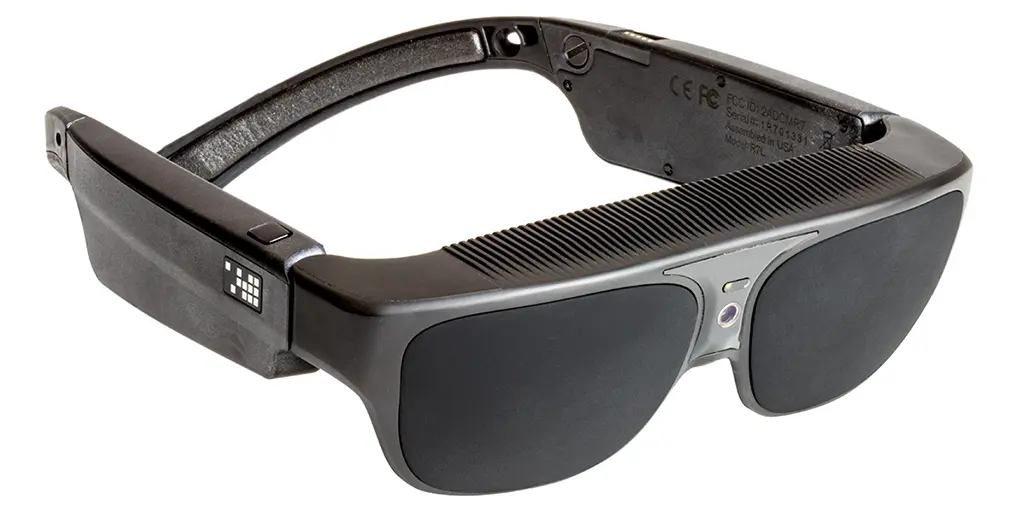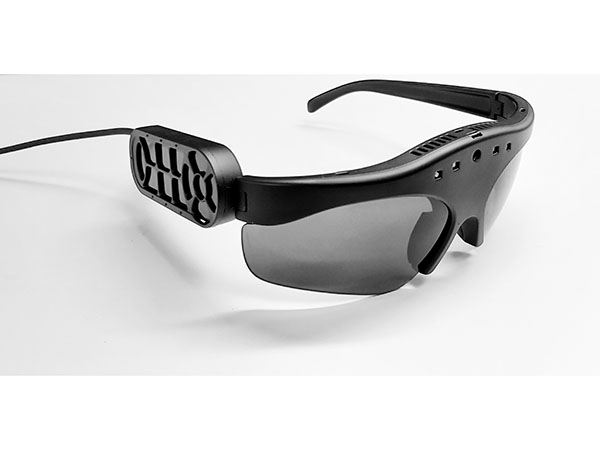The Future of Assistive Technology for the Blind: Empowering Independence
The Future of Assistive Technology for the Blind: Empowering Independence
Blog Article
Discover Advanced Assistive Tools for People With Aesthetic Impairments
The landscape of assistive modern technology for individuals with visual problems is progressing rapidly, offering a variety of innovative tools that improve autonomy and involvement (Braille displays and notetakers). From smart glasses that seamlessly combine aesthetic input with auditory advice to sophisticated navigation applications that redefine spatial understanding, these tools are reshaping opportunities. Additionally, the current innovations in Braille innovation and voice-activated systems substantially add to access. However, the effects of these advancements extend far past mere capability; they challenge traditional perceptions of special needs and independence. What might this mean for the future of inclusion and support?
Smart Glasses Innovations
Smart glasses represent a significant development in assistive technology for people with visual impairments. Geared up with cameras and sensing units, clever glasses can catch real-time aesthetic information, which is after that processed and shared to the customer with sound comments or haptic sensations.
In addition, innovations in expert system have better enhanced the abilities of smart glasses. Maker discovering algorithms can acknowledge faces, reviewed text, and recognize objects, making them invaluable devices for everyday jobs. Customers can obtain auditory hints that provide context regarding their environment, promoting freedom and self-confidence.
Additionally, the ergonomic style and light-weight nature of several wise glasses make them ideal for prolonged usage, guaranteeing convenience while boosting capability. As these devices continue to progress, they hold the possible to revolutionize the means people with visual disabilities experience their lives, connecting the gap in between ease of access and technology. The ongoing research study and growth in this area promise to broaden the opportunities for smart glasses, making them a vital part of modern-day assistive gadgets.
Navigating Application and Devices
Numerous navigating apps and devices have actually become crucial sources for people with aesthetic problems, significantly improving their ability to pass through unknown atmospheres. These modern technologies leverage GPS functionality, audio hints, and real-time data to offer individuals with exact navigating support.
One popular example is the Aira app, which attaches customers to skilled agents who can offer aesthetic descriptions of environments and navigation assistance through a live video clip feed. This solution improves the user's spatial awareness and confidence while navigating. An additional remarkable device is Seeing Eye GPS, which uses voice-guided navigation and points of interest, making it possible for individuals to gain access to important information concerning their surroundings.

As innovation proceeds to breakthrough, the advancement of extra sophisticated navigating tools guarantees to additional encourage people with visual disabilities, assisting in seamless wheelchair and integration right into varied atmospheres. Such technologies contribute in advertising a more inclusive society.
Braille Innovation Innovations
In the last few years, improvements in Braille technology have actually significantly transformed exactly how people with visual problems access information and engage with the world around them. The advancement of portable Braille screens has revolutionized reading by allowing users to attach wirelessly to smartphones, computer systems, and tablet computers. These devices convert text into Braille in real-time, allowing smooth communication with digital material.
Furthermore, cutting-edge Braille printers have actually arised, boosting the production of tactile materials. Modern embossers are quicker and a lot more efficient, enabling the More hints fast production of Braille documents and instructional products. This effectiveness lowers the time and price connected with generating Braille resources, making them more accessible to companies and institutions.
Additionally, the assimilation of Braille with various other innovations, such as artificial knowledge and device understanding, has opened brand-new methods for tailored discovering experiences. Voice recognition and synthesis modern technologies can complement Braille, providing an inclusive method to details dissemination.
As the need for comprehensive education and learning and office environments grows, these technical improvements play a crucial duty in empowering individuals with aesthetic problems, guaranteeing they have equivalent access to info and opportunities in different elements of life.
Wearable Gadgets for Freedom
An expanding array of wearable gadgets is improving independence for people with visual disabilities, using cutting-edge remedies that improve navigating and everyday living. Braille displays and notetakers. These gadgets make use of sophisticated technologies to provide real-time feedback and support, advertising freedom in numerous environments

Wearable innovation additionally includes smartwatches that can be configured with accessibility functions, making it possible for customers to get notices, track their areas, and even require aid with the touch of a switch. In addition, some devices integrate expert system to evaluate the environment, offering sound descriptions of close-by things or people.
Voice-Activated Assistive Solutions
Leveraging voice-activated assistive solutions has actually transformed the landscape of assistance for people why not try here with aesthetic disabilities, supplying hands-free communication and access to a range of tasks. These innovations utilize all-natural language handling and expert system to allow individuals to do day-to-day tasks via basic voice commands.

In addition, current developments in voice recognition accuracy have actually boosted the individual experience considerably, fitting varied accents and speech patterns. This inclusivity makes sure that more individuals can benefit from these technologies, fostering a greater feeling of freedom.
Final Thought
In verdict, the growth of sophisticated assistive tools substantially boosts the self-reliance and lifestyle for people with visual problems. Technologies such as clever glasses, navigating applications, Braille innovation, wearable tools, and voice-activated solutions jointly foster an even more inclusive atmosphere. These technologies empower individuals to navigate their environments with confidence and involve more completely with the world, eventually promoting better ease of access and level playing fields for individuals encountering aesthetic challenges.
The landscape of assistive innovation for people with visual problems is developing rapidly, presenting an array of ingenious gadgets that boost autonomy and involvement.Smart glasses represent a considerable advancement in assistive technology for individuals with aesthetic problems. As these gadgets proceed to evolve, they hold the potential to revolutionize the way individuals more with visual disabilities experience their everyday lives, bridging the void in between access and modern technology.In recent years, innovations in Braille modern technology have actually considerably transformed how individuals with aesthetic disabilities accessibility information and engage with the world around them. These modern technologies equip users to browse their environments with confidence and engage even more fully with the globe, inevitably promoting better accessibility and equal possibilities for people encountering visual challenges.
Report this page